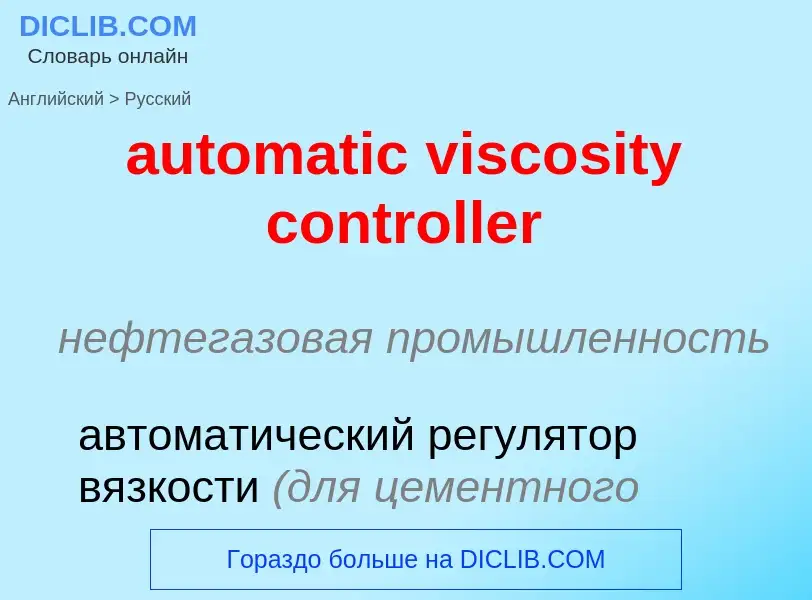Перевод и анализ слов искусственным интеллектом ChatGPT
На этой странице Вы можете получить подробный анализ слова или словосочетания, произведенный с помощью лучшей на сегодняшний день технологии искусственного интеллекта:
- как употребляется слово
- частота употребления
- используется оно чаще в устной или письменной речи
- варианты перевода слова
- примеры употребления (несколько фраз с переводом)
- этимология
automatic viscosity controller - перевод на русский
нефтегазовая промышленность
автоматический регулятор вязкости (для цементного раствора)
строительное дело
объёмная вязкость
общая лексика
объемная вязкость
общая лексика
дисковый контроллер, контроллер диска
плата расширения и/или микросхема, обеспечивающая взаимодействие процессора с дисковым накопителем
строительное дело
ПИД-регулятор, пропорционально-интегральный (изодромный) регулятор с предварением
Определение
Википедия
The viscosity index (VI) is an arbitrary, unit-less measure of a fluid's change in viscosity relative to temperature change. It is mostly used to characterize the viscosity-temperature behavior of lubricating oils. The lower the VI, the more the viscosity is affected by changes in temperature. The higher the VI, the more stable the viscosity remains over temperature fluctuations. The VI was originally measured on a scale from 0 to 100; however, advancements in lubrication science have led to the development of oils with much higher VIs.
The viscosity of a lubricant is closely related to its ability to reduce friction in solid body contacts. Generally, the least viscous lubricant which still forces the two moving surfaces apart to achieve "fluid bearing" conditions is desired. If the lubricant is too viscous, it will require a large amount of energy to move (as in honey); if it is too thin, the surfaces will come in contact and friction will increase.











![Early PID theory was developed by observing the actions of [[helmsmen]] in keeping a vessel on course in the face of varying influences such as wind and sea state. Early PID theory was developed by observing the actions of [[helmsmen]] in keeping a vessel on course in the face of varying influences such as wind and sea state.](https://commons.wikimedia.org/wiki/Special:FilePath/Scross helmsman.jpg?width=200)

